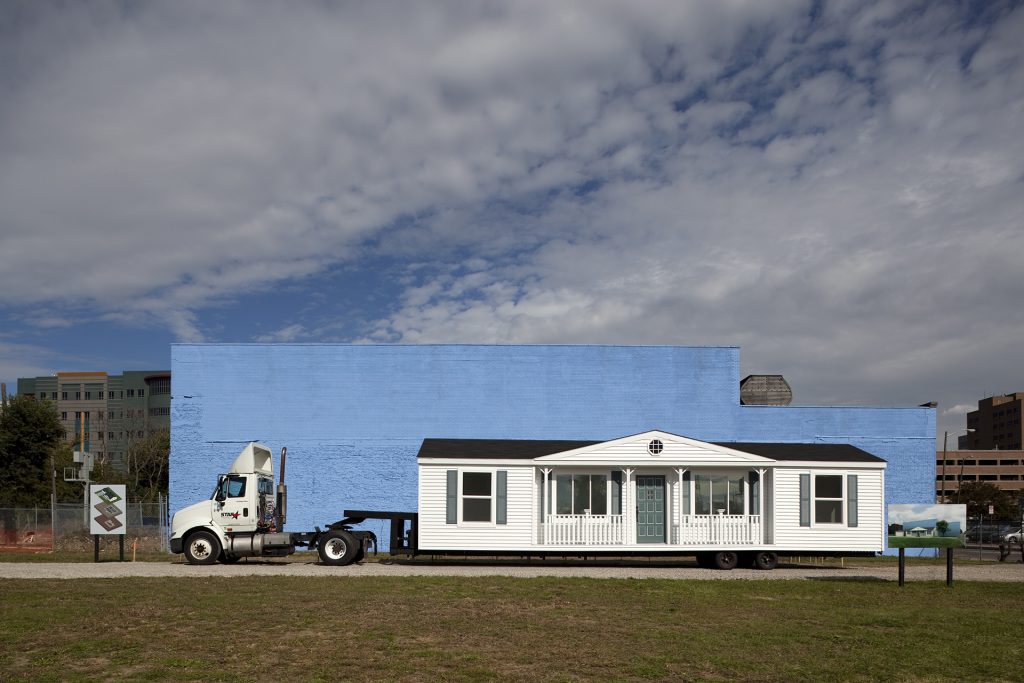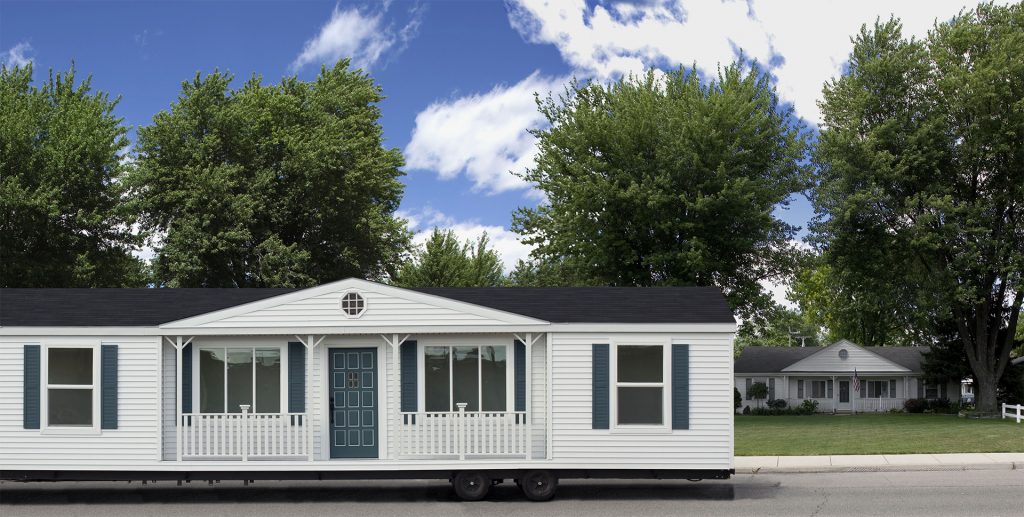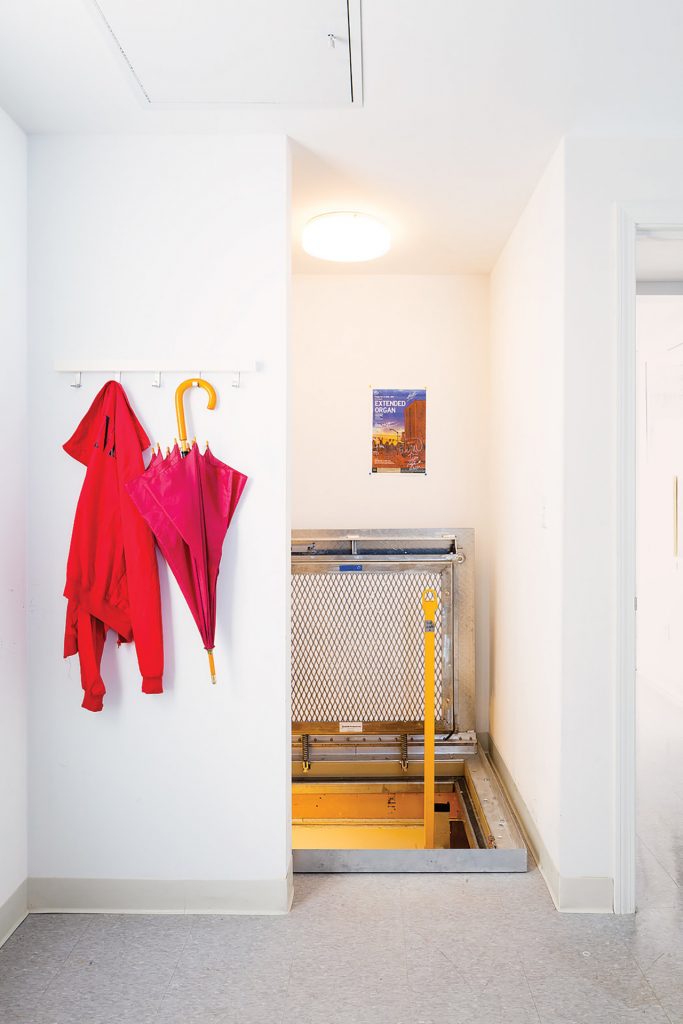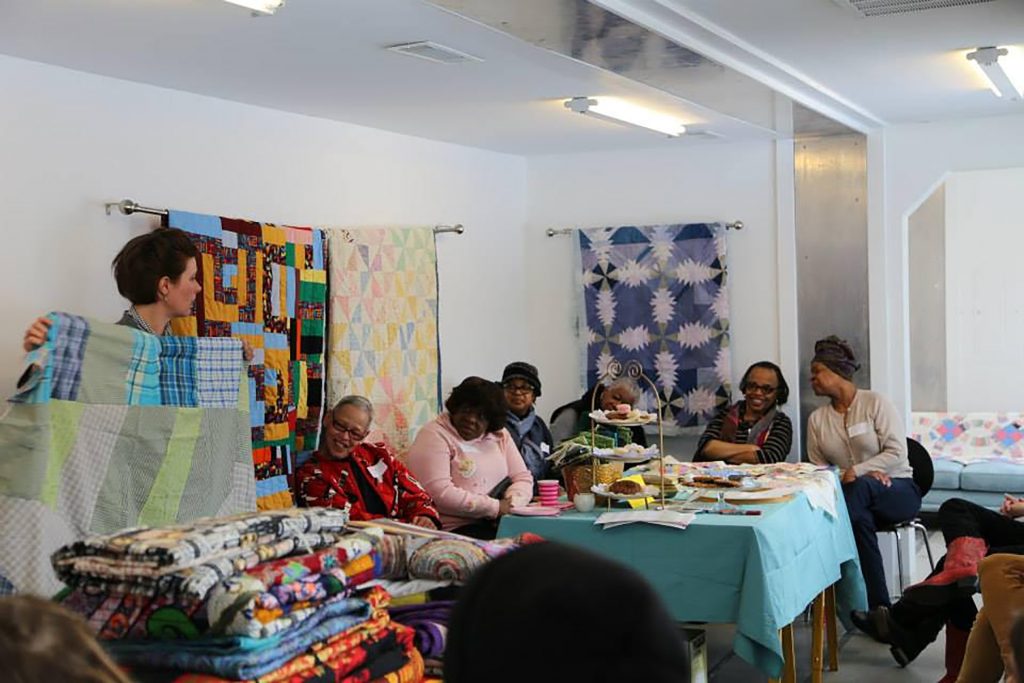Mike Kelley’s Mobile homestead
Hours
Please note that Mike Kelley’s Mobile Homestead is currently closed to the public. When open, its regular operating hours are as follows:
Monday-Wednesday: Closed
Thursday-Friday: 11AM-8PM
Saturday-Sunday: 11AM-5PM

Mike Kelley’s Mobile Homestead ready to hit the road, 2010. Photo: MOCAD.

The Mobile Homestead in front of the original Kelly home on Palmer Road in Westland, Michigan, 2010. Photo: MOCAD.
About
Mobile Homestead is a permanent artwork by the late artist Mike Kelley, located at MOCAD. The sculpture is a full-scale replica of the 1950s ranch-style home where Kelley grew up. It is the only work of public art ever made by Kelley and the first major installation of his work in his hometown.
Following Kelley’s wishes, the ground floor rooms of the home are a community gallery and gathering space featuring exhibitions and programs created by and for a diverse public that reflect the cultural tastes and interests of the local community. The home’s white clapboard facade and front room can detach from the rest of the structure and travel as a trailer into communities throughout Detroit on missions in service of the public good.
Read more about the Mobile Homestead.
History
The Mobile Homestead was born from ideas that Mike Kelly (b. Detroit, 1954, d. Los Angeles, 2012) developed over a lengthy period. Kelley’s birthplace of Detroit has always been a locus of his practice. For years, he entertained buying the home where he spent his childhood, located on Palmer Rd. in Westland, a suburb of Detroit that primarily housed workers for the Big Three automakers. When the current owner refused to sell, Kelley produced a facsimile of the house on wheels. In collaboration with MOCAD and Artangle, he completed this first phase of Mobile Homestead in 2010.
Following the project’s first phase, Mobile Homestead made its maiden voyage from MOCAD in Detroit to the ‘mothership,’ his original home in the suburbs. Symbolically, the return trip reverses the ‘white flight’ of the 1960s when the decline of the automobile industry and increasing racial tensions caused an exodus of the middle class from the city to the surrounding suburbs. The Mobile Homestead used Michigan Ave. as the primary route for this voyage, making stops at historically, culturally, and personally significant sites for Kelley.
Read more about the history of the Mobile Homestead.

Hatch inside of the Mobile Homestead leading to the subterranean tunnels, 2017. Photo: MOCAD.

Quilting Bee program inside of the Mobile Homestead, 2014. Photo: MOCAD.
Support
Artangel commissioned Mike Kelley’s Mobile Homestead in association with MOCAD, LUMA Foundation, and the Mike Kelley Foundation for the Arts with the generous support of the Artangel International Circle. The Mike Kelley Foundation for the Arts supports Mike Kelley’s Mobile Homestead.

